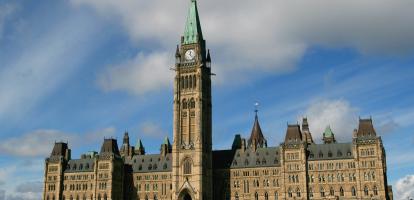Governments across Canada are still coming to grips with the COVID-19 pandemic, but looking toward recovery all the same. For Alberta, this is a uniquely challenging endeavour. Oil prices remain low, and may stay there for some time. But there are options, and one stands out: making it easier for skilled individuals to move in.
Ensuring Alberta is as open as possible to the best talent from across Canada and abroad to exercise their profession, ply their trade or conduct their business can help boost the province’s economy. Not all moves make sense, but there are artificial regulatory barriers currently deterring some potential migrants from helping build Alberta’s economy. Those should be lifted.
It may seem strange, at a time of inordinately high unemployment, to facilitate mobility into the province. After all, in-migration to Alberta has traditionally ebbed and flowed in sync with the ups and downs of the energy sector. But facilitating migration of skilled workers can benefit not only those who make the move, but also the fortunes of Albertans in general. At the very least, a larger economy will help raise government revenue and address our province’s immense fiscal challenge.
How large might these gains be? In a recently published research paper for the C.D. Howe Institute, we quantified how much economic growth Alberta might enjoy from easing the costs of moving in. We found, across a range of scenarios, that each 1,000 additional workers that move in response to lower migration costs would boost Alberta’s economy by $141-million. And if migration costs fall by 1 per cent across the board, we estimate gains of nearly $9-billion.
While these estimates are not set in stone and they depend on certain reasonable assumptions we make in our analysis, one thing is clear: Making it easier to move to Alberta could help boost the pace of recovery in the short term and increase productivity in the long term.
But achieving these gains is easier said than done. It requires governments to adopt significant reform to many aspects of labour market regulations, skills certifications, internal trade restrictions and more. We envisage a grand strategy to address all obstacles that individuals face when they move in.
Consider the sometimes significant challenges for potential movers to have their designation, training or experience from other provinces seamlessly recognized elsewhere. Across Canada, there are more than 600 organizations regulating professions and trades. Alberta itself regulates 36 health, education and legal professions, 21 other professional categories, and 18 trades. With so many standards and certifications, it can be hard to make a move.
Limiting the paperwork required from potential movers and a more widespread use and recognition of national certifications and designations (such as those occurring under the Red Seal standards program for tradespeople) would enhance such mobility. A maximum harmonization of licensing and designation regimes with those of other provinces and easier recognition of experience obtained there would also help.
Recent regional and national internal trade agreements, such as the New West Partnership Trade Agreement, have improved the situation, to be sure. But obstacles remain. There’s much left to do to ensure tradespeople and professionals can freely come to Alberta. Perhaps the simplest reform of all would be for Alberta to aim to recognize the credentials or certifications issued by any other province as automatically valid here, across the board. Needless restrictions on dental hygienists, nurses, paramedics and so on make little sense.
And it is not just Albertans who stand to benefit. Gains here do not come at the expense of other provinces, and Canada can gain from unilateral moves by a province. We estimate that if Alberta lowers the cost of migrating into the province by just 1 per cent, then the national economy could grow by $2.5-billion. Allowing workers to move where their skills have the highest returns boosts our country’s overall economic productivity.
Our study also shows that there is a close connection between fostering increased labour mobility and lower internal trade barriers – an issue that challenges policy makers in Canada continuously. This is not surprising: If credentials elsewhere are recognized by Alberta, then it’s both easier for someone to move in and also easier for that same person to export their service to businesses here. Either way, benefits abound for provincial and national economies.
In short, reforms to enhance individual mobility, combined with further efforts to reduce interprovincial trade barriers, need to be part of any government’s COVID-19 recovery strategy. But for a province like Alberta, the need is particularly high, and the potential gains are too large to ignore. Alberta may not have much in the way of answers for its oil problem right now – but in the meantime, it can tell fellow Canadians to come on in.
Published in the Globe and Mail
Trevor Tombe is associate professor of economics at the University of Calgary and research fellow at its school of public policy. Daniel Schwanen is vice-president, research, at the C.D. Howe Institute.





